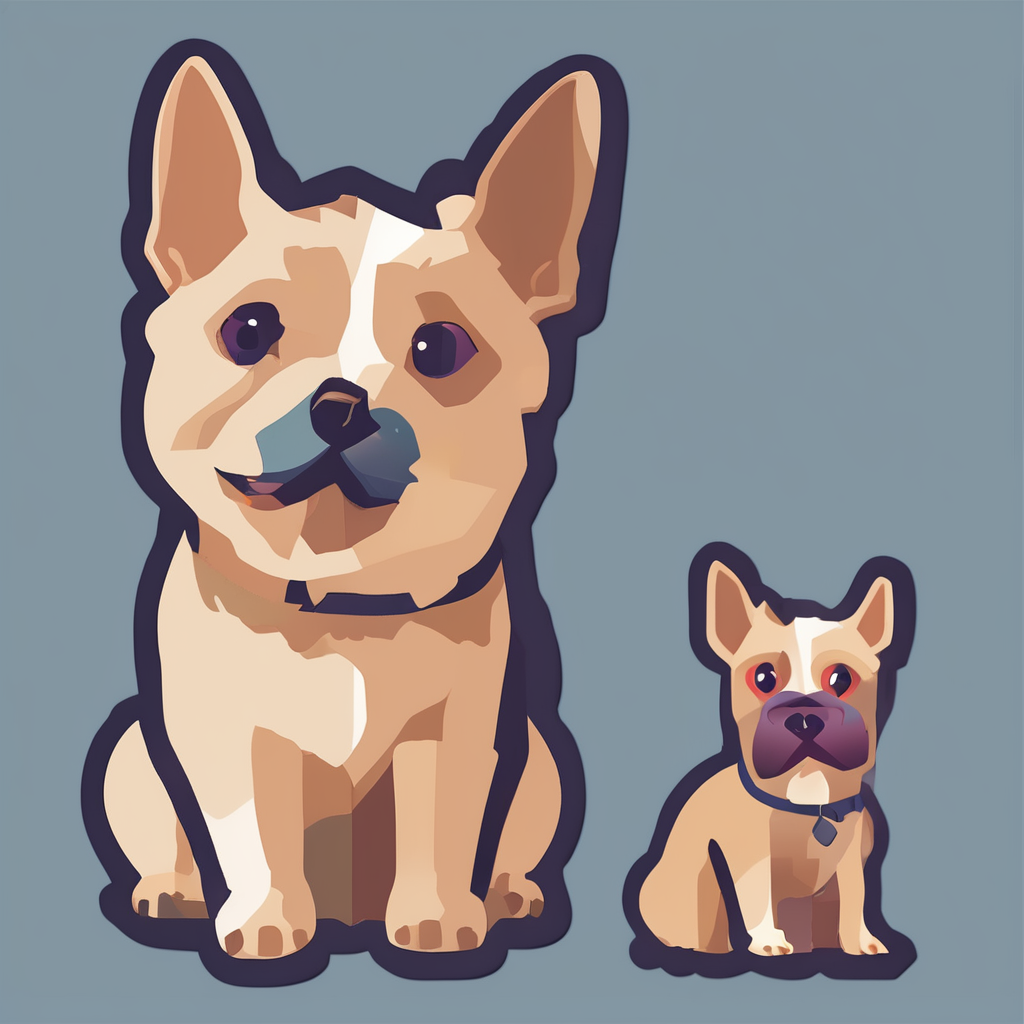Distinctive Physical Traits of British Dog Breeds
British dog breeds showcase unique physical characteristics that set them apart in the canine world. For instance, the iconic Bulldog features a broad, muscular build with a distinctive wrinkled face and pushed-in nose, exemplifying its tough yet affectionate nature. Meanwhile, the Collie presents sleek fur with a long, tapered snout and an elegant stature, reflecting its heritage as a herding dog. The Bull Terrier stands out with its egg-shaped head and robust, athletic body, combining both strength and playful charm.
Variations in coat type and colouring further emphasize this diversity. Many British dog breeds, like the Collie, boast dense double coats designed for protection against chilly, damp climates typical of the UK. Bulldog coats are shorter and smoother, suited for indoor companionship. Colour patterns also vary widely—from the classic brindle Bulldog to the sable and white Collie—highlighting centuries of selective breeding to enhance traits fitting their roles and environments.
Also read : How do UK dog walking services compare?
Traditional British environments, characterized by rural farmland, coastal regions, and urban developments, played a crucial role in shaping these unique physical characteristics. Dogs evolved traits that helped them thrive—such as the Bull Terrier’s muscular frame for agility and the Collie’s thick coat for weather resilience—making British dog breeds a fascinating study of form meeting function.
Notable Temperaments and Behavioural Qualities
British dog breed personality often embodies a loyal and devoted nature. These breeds typically form strong bonds with their families, showcasing a steadfast companionship that many owners cherish. Such loyalty is a hallmark across several British breeds, making them excellent pets for those seeking enduring relationships.
Also read : What are the best UK pet insurance options for dog owners?
Energy levels vary widely among British breeds, influencing their temperaments. For example, working breeds generally exhibit higher energy and drive, requiring regular exercise and mental stimulation. Conversely, companion breeds may present calmer behaviour traits, thriving in relaxed household environments. Understanding these differences is crucial for aligning a breed’s temperament with your lifestyle.
Trainability also distinguishes British dog behaviours. Many exhibit an eager-to-please attitude, responsive to consistent training methods. However, the degree of sociability can differ; some breeds are extroverted and affectionate with strangers, while others display reserved or cautious demeanours, reflecting strong guarding instincts. These guarding traits serve protective functions but require balanced socialisation to ensure friendly, well-rounded behaviour.
Overall, recognising the interplay between loyalty, energy, trainability, and guarding instincts helps prospective owners select British breeds suited to their needs. This insight promotes harmonious living and maximises the rewarding aspects of companionship these breeds offer.
British Dog Breeds and Their Historical Roles
An insight into their origins and societal significance
British dog breed history reveals a rich tapestry of roles shaped by specific needs and environments. Many breeds emerged with distinct purposes, reflecting Britain’s diverse landscapes and occupations. For example, hunting was a critical activity, leading to breeds like the English Setter. This breed was originally developed for field work, assisting hunters by locating and pointing game birds—showcasing its keen scenting abilities and steady temperament.
Similarly, herding played an essential role in rural British life. Breeds such as the Border Collie were prized for their intelligence and agility, crucial for managing sheep across rugged terrain. This functional origin cemented the dog’s place in agricultural society.
Ratting is another historical role that influenced British dog breed history. Terriers were bred to control vermin, a vital task for protecting food stores in both urban and rural settings. Their tenacity and sharp instincts made them invaluable companions.
The Pembroke Welsh Corgi symbolizes a more unique aspect of British dog breed history. Known for its close association with the British royal family, the Corgi’s role extended beyond herding to companionship and status symbol. Its enduring presence in royal British history highlights the cultural significance of certain breeds.
British dog breeds not only served practical purposes but also became enduring symbols of British culture and society, embodying tradition and identity.
Breed Heritage and Regional Origins
Understanding roots in geography
British breed origins trace deeply into the regional landscapes of the UK, where specific environments shaped unique canine traits. The British climate and terrain significantly influenced dog development, promoting distinct adaptations necessary for survival and utility. For example, the rugged highlands of Scotland favored breeds like the Scottish Terrier, sturdy and weather-resistant, ideal for hunting and countryside life.
Similarly, the industrial revolution’s hub in Yorkshire gave rise to the Yorkshire Terrier, a small, agile breed suited for urban living and vermin control. Meanwhile, the Welsh Corgi’s heritage lies in Wales’ farming landscapes, bred primarily for herding cattle across uneven terrains. This breed’s stamina and intelligence are products of the local demands and climate challenges.
Each breed reflects its regional dog breed UK origin story, where natural selection and human breeding intertwined. British breed origins underline the diversity within the UK’s dog populations, highlighting how landscape and climate inspire physical and behavioral characteristics. This close relationship between environment and breed showcases why understanding heritage is essential when researching regional dog breeds UK.
Fascinating Breed-Specific Facts
British dog breeds harbor some truly intriguing breed details that reflect both their rich history and unique personalities. For instance, the Border Collie, renowned as one of the most intelligent breeds globally, holds records for its remarkable problem-solving skills and herding ability. This British dog breed fact highlights why farmers worldwide prize them for managing flocks efficiently.
Another notable quirk resides in the Bulldog. Despite its tough appearance, this breed has a gentle temperament and even inspired the nickname “the British Bulldog” to symbolize resilience and determination during wartime. This fascinating trait adds a cultural dimension to the breed’s identity beyond its physical features.
Several British dog breeds have also significantly impacted international dog culture. The English Setter’s graceful hunting style contributed to pointing dog training methods adopted globally. Meanwhile, the Scottish Terrier’s distinctive look has made it a beloved ambassador in popular culture, showing how British breeds extend their influence far past their origins.
These breed-specific facts not only entertain but also deepen appreciation for the British breeds’ contribution to canine diversity and heritage worldwide. Exploring these quirks and contributions reveals why British dog breeds continue to captivate enthusiasts everywhere.





